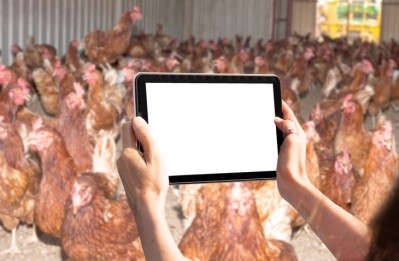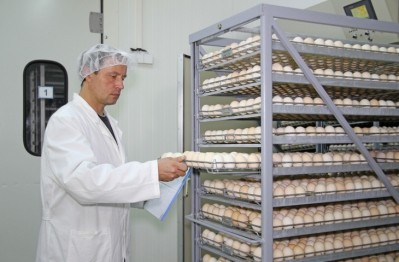Show me the money! Ag tech is pulling in venture capital

“Agribusiness, entrepreneurs, academic institutions, along with venture capitalists are waking up to the fact there is a need for change and the issues and opportunities this creates,” Adam Anders, managing partner of Anterra Capital, a specialist fund focused on food and agriculture, told us.
Indeed, investment in food and agriculture technology startups hit $4.6bn in 2015, nearly double the levels reached in 2014 - $2.36bn, according to data released by AgFunder.
Reality check
Nutreco looks to foster innovation
Nutreco’s FeedTech Challenge, launched in November 2016, is aimed at connecting start-ups with industry experts and scientists in an attempt to support innovation related to nutrition tackling antibiotic resistance, feed to farm efficiency or early animal diets. A spokesperson for Nutreco gave us an update on the progress of that initiative: “The first phase has now ended. In total, we have received 44 solutions. This week, we will select 10 finalists, who will participate in the Challenge Event on the 22-23 February 2017.”
However, compared to other sectors, food and agriculture growth capital expenditure is still behind:
“The agriculture sector, which represents around 10 to 12% of global GDP, actually only receives about 3.5% of global venture capital (VC) funding. So while we saw a ten-fold increase in ag tech VC backing in the past five to six years and the market is expected to soften after such an increase, there is still a wide funding gap compared to other industries,” he stressed.
Healthcare, for comparison purposes, accounts for about 12% of gross domestic product (GDP) and received about 12% of venture funding in 2015, said the VC fund manager.
However, Anders, who is a member of the jury appraising innovative projects under the Nutreco feed breakthrough challenge, said the good news is the number and type of investors participating in the ag tech sector continues to expand.

AgFunder’s mid-year review of ag-tech investment trends for 2016, while showing a slight pullback in venture investment for the sector, also noted the number of deals grew 7% year-over-year to 307, compared to 286 during H1-2015. “Seed stage activity was healthy, and Series B funding dollars increased 50% year-over-year,” noted the authors.
The number of investors grew to 425 during the first half of 2016, a 52% increase on H1-2015, as familiarity and interest in the sector increases, according to the review.
Resources, consumer push
A fundamental driver behind the sectoral change in the ag domain is, of course, the push coming from consumers, mirrored in the growing GMO free, chemical free, and organic food trend: “People today have more of an emotional connection with their food than ever before. They are more aware of sustainability and environmental issues,” said Anders.
Moreover, the planet needs to produce about 70% more food by 2050 without expanding the land area dedicated to agriculture - so that limitation along with finite natural resources, growing populations, and increasing consumption of animal products from middle classes in developing markets are behind the drive to transform farming globally, he added.

Society, then, is demanding a farming system that does more with less, has a reduced dependency on antibiotics, and avoids outcomes such as pesticide residues in soils, said the fund manager.
Corporate venture capital shake-up
“The agriculture sector, though traditionally conservative, risk averse and slow to innovate, has now reached the tipping point as a result of this pressure.”
Large agribusiness groups have responded strongly in the past 12 months, with Monsanto and Syngenta leading the way: “But we are also seeing lots of new corporate VC initiatives, with large multinationals coming to the VC table to foster innovation that is core to their business such as ADM, Bunge, The Andersons Grain Group, and Nutreco,” said Anders.
Agriculture and feed operators can learn from other industries:
“When other sectors transformed, outsiders with a bold idea played an important role such as Skype in telecommunications, Tesla in the automobile industry and Genentech in the healthcare sector.”
The start-ups tending to attract the VC funds are those involved in developing new crop protection methods, precision agriculture and phenotyping, life science tools for plant breeding, animal health monitoring and diagnostics technology, smarter logistics for supply chain optimization, or track and trace tools, said Anders.
Antibiotic alternatives, enzyme technology
While he sees VC capital flow into alternative proteins and meat substitutes triggered by sustainability drivers, the fund manager said feed innovation that is not reliant on branding and less capital intensive such as antibiotic alternatives based on pre and probiotics or phytogenics is also attracting attention.
In addition, investors are showing interest in enzymes aimed at improving the feed conversion ratio, and animal gut health orientated innovation: “Big data technology that helps improve farming, breeding and understanding of the role of genetics is also generating interest, as well as crop science developments,” reported Anders.
Anterra Capital, he said, has invested in companies such as Vestaron Corporation, which develops bioinsecticides derived from naturally occurring peptides, and LemnaTec, a producer of plant phenotyping technology, relying on cameras and image analysis software, to support research, breeding, cultivation, environmental monitoring, and precision ag.
On that fund’s wish list when it assesses target start-ups or small businesses in the food and ag sector, said Anders, is “a big idea, a great management team, a sensible pathway to commercialization, an understanding of the market, and a realistic approach to integrating their innovation into the sector.”










